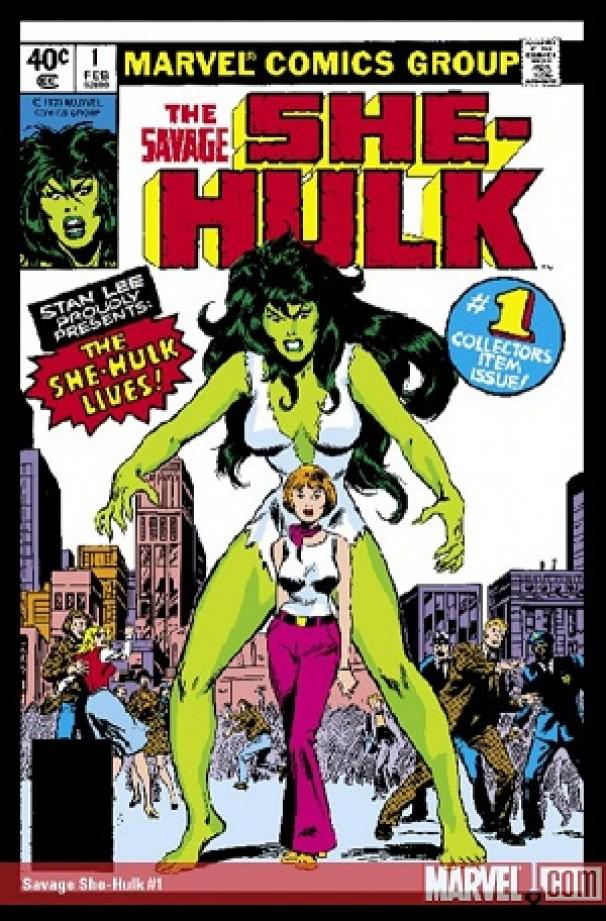Origin stories are super important to superhero mythology. David Goyer, the writer behind Christopher Nolan’s Dark Knight trilogy and Zack Snyder’s Superman films, has whipped up a lot of irradiated rage with his apocryphal one for She-Hulk.
Earlier this week, the podcast Scriptnotes released an episode in which Goyer sat on a panel of superhero movie screenwriters and answered questions from a live audience. As helpfully transcribed by the website the Mary Sue, when co-panelist Craig Mazin brought up fictional lawyer-turned-neon-green-giantess Jennifer Walters, Goyer replied:
“I have a theory about She-Hulk. Which was created by a man, right? And at the time in particular I think 95 percent of comic-book readers were men and certainly almost all of the comic-book writers were men. So The Hulk was this classic male power fantasy. It’s, like, most of the people reading comic books were these people like me who were just these little kids getting the s— kicked out of them every day. … And so then they created She-Hulk, right? Who was still smart. … I think She-Hulk is the chick that you could [sexually explicit verb] if you were Hulk, you know what I’m saying? … She-Hulk was the extension of the male power fantasy. So it’s, like, if I’m going to be this geek who becomes the Hulk, then let’s create a giant, green porn star” who, as a character, serves to service the Hulk.
To reverse-engineer this argument: She-Hulk is the way she is because some man, somewhere, must want her to be that way. Who is this man? A nerdy guy wrapped up in a power fantasy, identifying with the Hulk, mentally smashing things, and then suddenly hitting an imaginative roadblock. I am huge and green, thinks this hypothetical guy. I can barely string three words together in a sentence. Who is going to have sex with me?
And so She-Hulk was born.
But according to Stan Lee, one of the male creators Goyer refers to in his tale of sexual genesis, that is not actually what happened. Lee spoke to the Washington Post’s Michael Cavna on Wednesday and clarified that “I was looking for a new female superhero … the idea of an intelligent Hulk-type grabbed me.” What’s more, “never for an instant did I want her as a love interest for Hulk. Only a nut would even think of that.” (As many have pointed out, the idea that She-Hulk originated as a green geisha for He-Hulk is especially loony because the two superheroes are cousins—Walters develops her powers via a blood transfusion from Bruce Banner, one possible because he shares her rare blood-type.)
Alyssa Rosenberg has already mounted a defense of She-Hulk as a feminist figure—brilliant, confident, brawny, and in command of her sexuality. It is a valid but challenging stance to take, given the hyper-eroticized treatment Walters often comes in for in her own comic books. “Show me the superheroine who isn’t” beautiful and curvy, Lee told Cavna. Mythically powered ladies are constantly showing up at the crime scene in impractically revealing costumes and hilariously come-hither poses. Wrong as it is, Goyer’s “wackadoo” theory—that some dudes dreamed up She-Hulk not as a standard bearer for girl power but as a projection screen for their pornographic reveries—actually aligns with what we know of the comics universe, which remains relatively closed off to female fans.
Blogger Tim Hanley keeps a count of female writers, illustrators, and characters at DC and Marvel on a month-to-month basis. For the month of February 2014, he writes that 13.8 percent of the creators at DC and 12 percent at Marvel were women. Meanwhile, a Facebook survey the same month by writer Brett Schenker found that women make up 46.67 percent of today’s comics readership. So while the fan base itself is approaching a gender balance, a wide gap still exists between the number of female comics nerds and the number of women writing for them.
Maybe that wouldn’t matter so much if major players like Goyer didn’t persist in seeing superheroines as porn stars. But when the person supervising Wonder Woman’s migration to the silver screen has such a circumscribed view of women that he concocts an alternate origin story for She-Hulk hinging on her hotness, it is time to step back. Female superheroes exist to upend the idea that sexual allure constitutes the only real feminine superpower. That is their point; that is their glory. Goyer hasn’t just insulted a bunch of fans—he has betrayed a fundamental misunderstanding of what it means to be a Marvel leading lady.
